Art & Exhibitions
These 5 Inspired Installations Make Spring/Break Art Show Unforgettable
Featuring aliens, thrift stores, and ephemera from inhabitants of 'Davonhaime.'
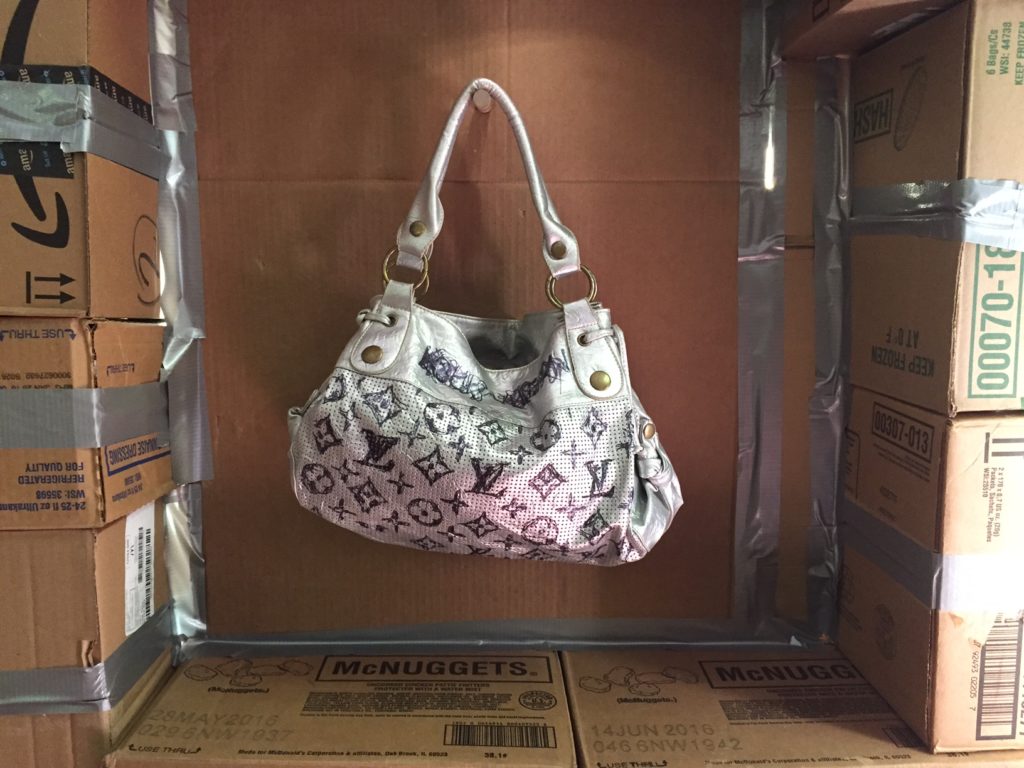
Featuring aliens, thrift stores, and ephemera from inhabitants of 'Davonhaime.'

Cait Munro

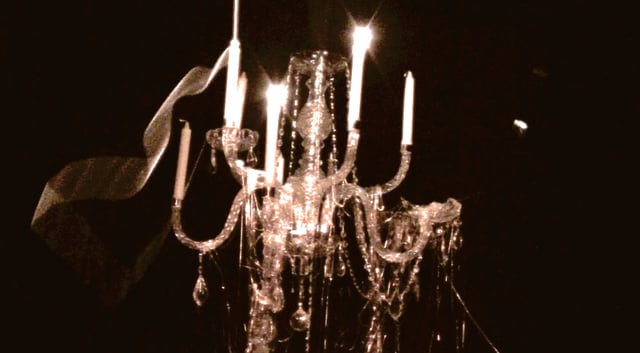
Aaron Pexa, The Lucent Parlor: Chapter II (2015).
Photo: Courtesy the artist.
If there’s one Armory Week fair that’s particularly conducive to installations, it’s the Spring/Break Art Show. Founded in 2009, the curator-driven fair-cum-exhibition is in its second year inside the seemingly endless corridors of the Skylight at Moynihan Station, which boasts unique nooks and crannies like bathroom stalls and wood-paneled former mail sorting rooms. And though it’s grown more exclusive over the years—out of over 250 applicants, approximately 75 curators were selected—its signature independent, DIY spirit remains.
The fair’s organizers, Ambre Kelly and Andrew Gori, found out last year that they’d be able to show at Moynihan Station just two weeks prior to opening (after losing their original location inside a former schoolhouse). But this year, they had a comparatively massive four months to plan, which allowed participating artists and curators to truly utilize the space.
“It’s a big difference, which you’ll probably see,” Kelly said during a press conference. “People had more time to plan and to really realize the vision that they had for the space.”

Alfred Steiner, installation view.
Photo: Cait Munro.
1. Alfred Steiner, “LV DIY,” special project by 101/EXHIBIT, curated by Kevin Van Gorp and Shen-Shen Wu
Luxury lifestyle lovers—and haters—will get a chuckle from Alfred Steiner’s faux-boutique filled with Louis Vuitton parodies. The makeshift store features cardboard shelves and plastic hangers stocked with shirts, bags, and other items haphazardly painted with the ubiquitous “LV” monogram, many of them still bearing the visible tags and logos of lesser brands like Banana Republic, Liz Claiborne, and humorously, McDonalds.
Steiner chose to lambaste Vuitton in particular thanks to its history of using intellectual property laws to silence criticism of the brand by artists, including Nadia Plesner, who was taken to court by the brand in 2011 for painting a Darfur refugee holding one of their signature purses. While actively silencing artists like Plesner, the brand is simultaneously known for collaborating with big-name artists like Yayoi Kusama and Takashi Murakami.
“Louis Vuitton’s artist collaborations sell merchandise billed as distinguishing individuals from crowds to huge crowds,” a statement by the artist reads. “Louis Vuitton’s artist collaborations are conspicuous consumption masquerading as avant-garde bohemianism . . . Projects like “LV DIY” are necessary to ensure that the Art World oligarchs remain vulnerable to criticism.”
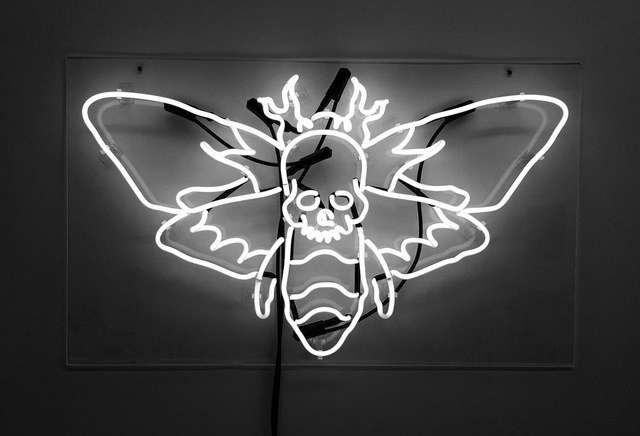
James Moore, Illuminate the Hive (2016).
Photo: Courtesy the artist.
2. James Moore, “Relegate The Flesh,” curated by Juliette Premmereur and Nicole Grammatico
“You have to sign a waiver,” an attendant may tell you as you attempt to walk inside James Moore’s installation. “You’re about to enter an alien research lab, and we take no responsibility for what happens to you.”
But fear not. Sign the so-called “waiver,” enter the room, and you’ll find yourself inside a world where green and silver blobs ooze from behind tile walls. Pass through a swinging plastic barrier and you’ll find Celestial Being, a glowing, translucent skeleton trimmed in silver lying flat atop a slick black table. Legend has it (as per the press release, that is) the sculpture originated from “alien greys injecting their DNA into the humans they once were.”
An array of graphic signs and vinyl prints hanging throughout the space reveal the artist’s belief in parallel universes, extraterrestrial beings, and the government and military’s secret knowledge of these phenomena.
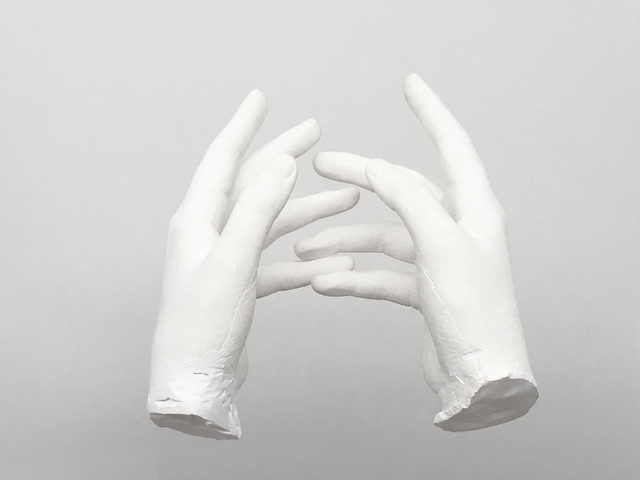
Esmeralda Kosmatopoulos, fifteen pairs of mouths, #4 (2016).
Photo: Courtesy of the artist.
3. Esmeralda Kosmatopoulos, “MHOA UNTDH,” curated by Amanda Uribe and Che Morales
Inspired by the artfully contorted gestures hands make while typing on smartphones, Esmeralda Kosmatopoulos cast 15 different hands in unique positions that become complete only with the imagined addition of a phone. The white sculptures dot a darkened room, lit by a neon sign that reads “MHOAUNTDH,” a nonsensical word created by combining “mouth” and “hands.”
“Hands have replaced the mouth in many ways,” Kosmatopoulos explained. “These movements are now as unique as the sound of one’s voice. They look absurd, but once you place a phone in them, they become very functional.”
Surrounding the hands are eight enveloping partitions where the viewer can watch on an iPad screen as a single word is translated ten times from English into the nine other of the most commonly used languages, and back again, using Google translate. The results are as delightfully bizarre—familiar and yet completely otherworldly—as the rest of Kosmatopoulos’s linguistically-charged creations.
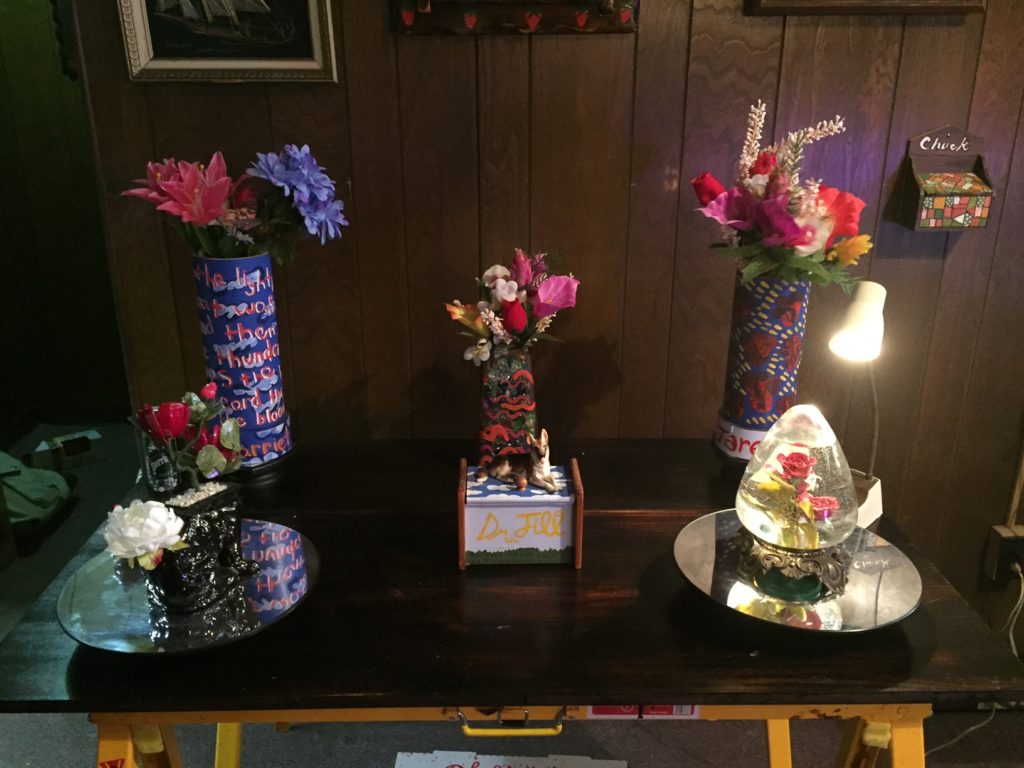
Azikiwe Mohammed, installation view.
Photo: Cait Munro.
4. Azikiwe Mohammed, “A New Davonhaime Thrift Store,” curated by Dustin Yellin
New Davonhaime is a fictional amalgamation of the five most densely-populated black cities in America: New Orleans, Detroit, Birmingham, Jackson, and Savannah. Created by Azikiwe Mohammed and updated daily with new items both gifted to and made by the artist, “Jimmy’s Thrift” is a location in the imagined town that has somehow sprung to life inside a cozy, wood-paneled room that features postcards, records, photographs, paintings, decor, and other ephemera from fictional townspeople.
“What are the items that prove the existence of a location? What are the items that inherently hold stories more than others? Whose stories?,” asks an artist statement. “There are placed I have never been but I still know they exist.”
The installation also features a headset connected to a record player that plays recorded interviews from real people discussing the first time they realized they were black.
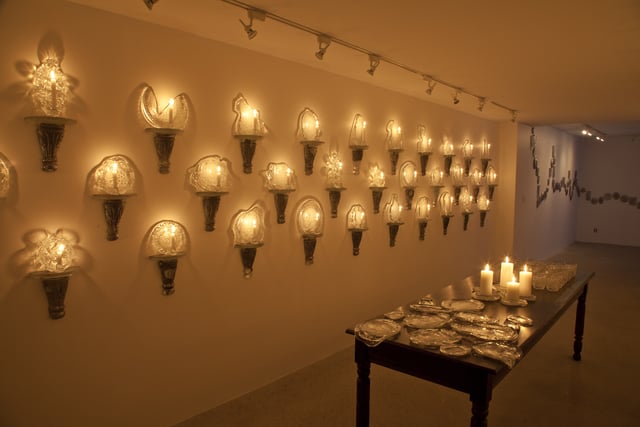
Aaron Pexa, installation view.
Photo: Courtesy of the artist.
5. Aaron Pexa, “The Lucent Parlor,” curated by Cade Tompkins Projects
“Come back at five,” artist Aaron Pexa says. “That’s when it really comes alive—after the sun goes down.” Pexa’s immersive installation, which features dozens of candlelit sconces, two videos of a twinkling chandelier, glass plates that look like they’re melting off a wooden table, and intricate damask wallpaper is installed inside an otherwise functional bathroom.
He’s right: it’s difficult to fully appreciate the peaceful magic of the work during daylight hours, but seeing such pristine objects juxtaposed against bathroom stalls and marble sinks (albeit, very sweet, vintage-looking bathroom stalls and marble sinks) is fun no matter the hour.